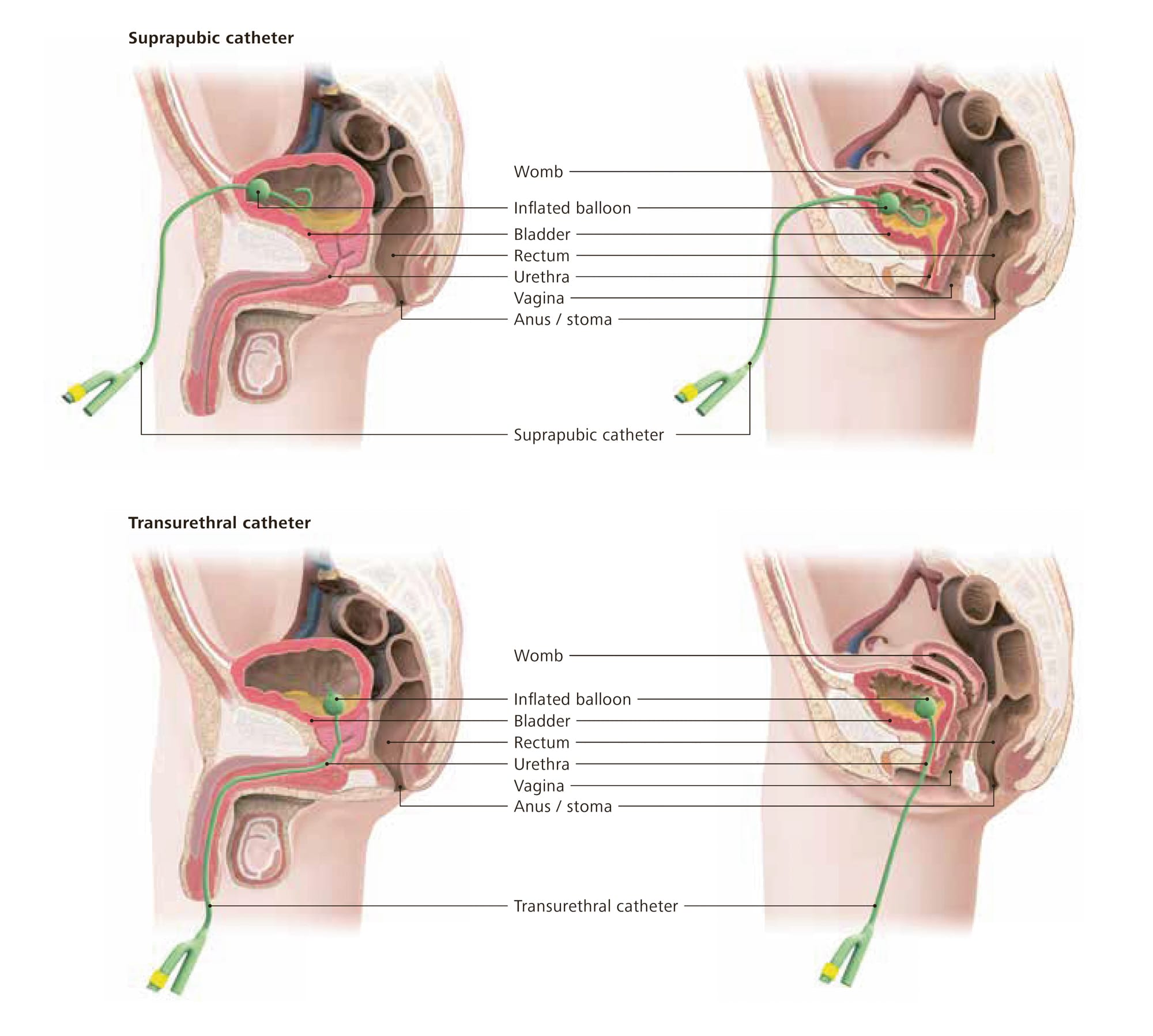
- 3 minutes to read
- 08 April 2021
What types of indwelling catheter are there, and what are the differences between them?
A suprapubic urinary catheter is an indwelling catheter that is inserted into the bladder through the abdominal wall. This allows the urine to permanently flow out of the bladder without having to pass the urethra.
There are different types of catheters and options to attach them. Often a small balloon is used to hold the catheter in the bladder. The catheter is covered with a dressing at the point of exit on the abdominal wall. This dressing must be changed at least once per week, and this must always be done if it gets wet (e.g. after a shower) or becomes loose.
Unlike a suprapubic urinary catheter, a transurethral urinary catheter is fed through the urethra into the bladder. This allows the urine to permanently flow out. The catheter is also fixed in place in the bladder thanks to a small balloon.

What do I need to consider if I have a catheter?
A catheter can lead to the formation of secretions. This means that there may be some discharge from the point where the catheter enters the abdominal wall or from the urethral orifice. The amount of discharge may vary. Secretions are an ideal breeding ground for bacteria – however, a bandage can prevent bacteria from entering the body and therefore avoid inflammations.
Nevertheless, it is important to make sure the secretion does not form incrustations. Careful personal hygiene is of the utmost importance when using a transurethral catheter. As you attend to your daily personal care, it makes sense to carefully wash away any secretions from the urethral orifice which are formed by the urethral mucous membrane.
Make sure the urine bag is positioned below the bladder (bladder level) to ensure complete drainage. The tube should never be bent or run above bladder level.
What do I need to do if no urine comes out?
The catheter could be blocked. Sediment is often deposited in the catheter, keeping the urine from draining. By kneading the catheter regularly, this sediment can mostly be avoided and / or removed. If not, the catheter needs to be rinsed. If you are unable to rinse the catheter on your own in accordance with the instructions, please contact your GP or a care service immediately.
What do I need to do if I feel pain or burning in my bladder?
This might be the first sign of a urinary tract infection – do a Nephur test. If the test is positive and / or the pain does not go away, please consult your GP. The pain might possibly disappear when increasing the fluid intake.
Urine is leaking around the outside of the catheter – how is this possible?
Possible causes might include:
- Blockage of the catheter.
- Positioning of the drainage bag above bladder level
- The tube could be bent or run above bladder level.
Is it bad if the skin around the suprapubic catheter’s entry point turns red? What should I do if the secretion from the point of exit of the catheter smells strongly or increases in volume?
This may be indicative of an inflammation or of mechanical irritation caused by the catheter. If there is no improvement even after changing the dressing more frequently or applying disinfectant to the catheter entry point, you should seek advice from your GP.
How often does the catheter need to be changed?
Silicone catheters basically have to be changed every 3–4 weeks. Suprapubic silicone catheters basically have to be changed every 6–8 weeks. In both cases, it depends on whether there are deposits in the catheter, and whether the catheter tends to become blocked. Talk to your urologist about this.
May I cap the catheter if I want to go swimming?
Generally not. The risk of infection increases each time the drainage bag and the catheter are disconnected. Please consult your urologist.

Be the first to comment!